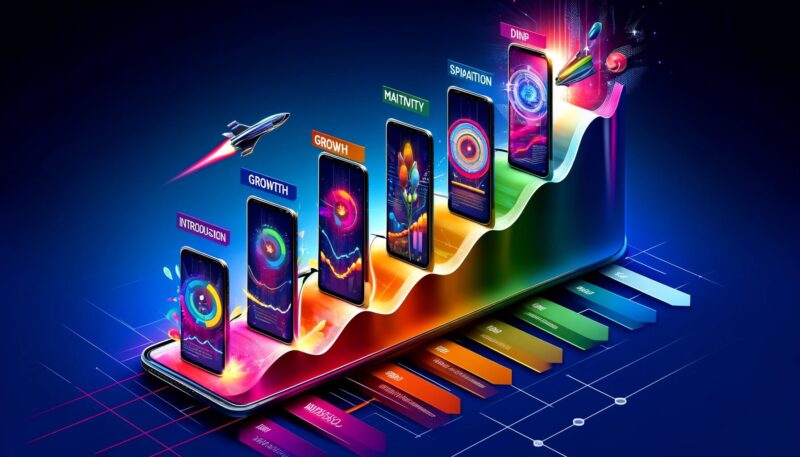Do you have questions or concerns like these?
- What is Product life-cycle theory?
- What is a concrete example of Product life-cycle theory?
If you’re grappling with such questions and uncertainties, this time I will clearly explain:
- Overview
- A concrete example based on my experience
Please refer to this article to deepen your understanding of Product life-cycle theory.
What is Product life-cycle theory?

The Product Life Cycle Theory, developed by Raymond Vernon, explains international trade patterns based on the life cycle stages of products, from introduction to decline.
Stage 1: Introduction
New products are introduced to the market.
At this stage, consumers are unaware of the product, necessitating promotion to stimulate sales.
Profits are low but increasing.
Stage 2: Growth
Demand for the product increases rapidly, leading to higher sales and profits.
Production costs decrease, and competitors enter the market.
Stage 3: Maturity
The product is widely known, with many consumers owning it.
Sales growth slows, and competition intensifies, leading to price reductions and lower profit margins.
Stage 4: Saturation
Sales volume stabilizes.
Modifying product attributes becomes necessary to attract new customers.
Stage 5: Decline
Demand decreases, leading to reduced sales.
The product may be discontinued or sold to another company.
Production often shifts to developing countries.
Impact on International Trade
As products move from growth to maturity, production shifts from the country of origin to other nations.
Eventually, the original country may become an importer of the product, demonstrating dynamic comparative advantage.
What is a concrete example of Product life-cycle theory?

Role of Smartphones in Daily Life
I rely heavily on my smartphone in my daily life, especially as a graduate student.
It is an indispensable tool for my studies and research.
For instance, I use it to read marketing papers and materials, and check data analysis results.
This allows me to access information anytime and anywhere, significantly improving my efficiency.
Introduction Phase of Smartphones
I got my first smartphone in high school.
At that time, it was a new technology with many innovative features.
I was excited about accessing various information through apps and connecting with friends via social media.
Growth Phase of Smartphones
During my university years, smartphone performance improved dramatically.
The camera quality enhanced, making it enjoyable to take photos for my studies and hobbies.
Additionally, new apps emerged, which I used to enhance my learning and daily life quality.
Maturity Phase of Smartphones
Currently, smartphones are central to my life.
I use it for scheduling classes, managing research progress, and communicating on social media.
The market offers many competitive models, providing ample choices.
Saturation Phase and Future of Smartphones
The smartphone market is saturated, but I am interested in new technologies and features.
For example, I am always curious about new apps and services utilizing AI technology.
In the future, I expect smartphones to evolve further and make our lives even more convenient.
This article uses material from the Wikipedia article “Product life-cycle theory” which is released under the Creative Commons Attribution-Share-Alike License 4.0. Additionally, the texts and images were generated using ChatGPT.


